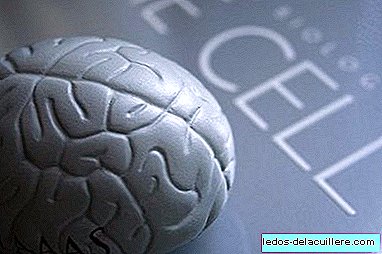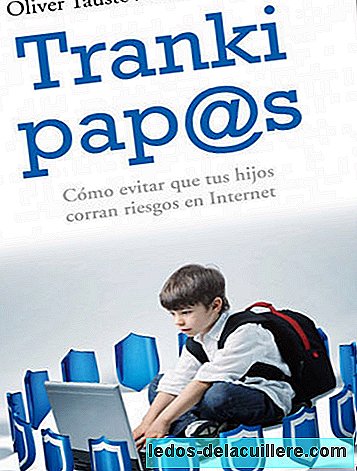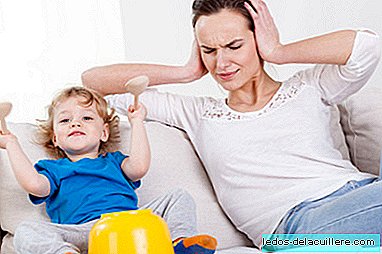
Language disorders in the childhood period can be evolutionary (language problems that exist since the beginning of the acquisition of the same, whose cause is unknown or secondary to other disorders such as deafness, mental retardation, cerebral palsy ...) or acquired (problems derived from a head injury, tumor, infectious disease ...). In this second group is the childhood aphasia.
The brain of newborns, while having the same number of neurons as the adult, is not as large. As the brain develops, the neurons grow in size and increase the connections between them. Therefore, a brain injury at this stage of brain immaturity are very important and different from those in which the brain is already mature.
Let's learn a little more about childhood aphasia: types, characteristics, causes, treatment and prognosis of childhood aphasia.
Types of childhood aphasia
If the damage occurs in the area in charge of language, the alterations will depend on the degree of acquisition of the same that is possessed at the time of the injury. Therefore, we can differentiate between connatal or perinatal aphasia Y acquired childhood aphasia.
- Connatal or perinatal childhood aphasia: The brain injury occurs during pregnancy or at the time of delivery. Generally, these types of injuries have a favorable prognosis in terms of language acquisition despite certain delays. This is because, although the left hemisphere of the brain is the part that controls the language, if this part is damaged the child can use other brain areas to process the language (it is called "brain plasticity")
- Acquired Childhood Aphasia: The brain injury occurs when the language has already been acquired partially or totally, covering between 2 years and 8-9 years.
Characteristics of childhood aphasia
The lesions in different areas of the left hemisphere are the cause of the linguistic alterations, which can vary from difficulty in speaking but preserving the understanding to the opposite case, that is, without problems to speak but with large comprehensive deficits. These characteristics depend on the brain area of the injured left hemisphere.
The linguistic symptoms that usually occur in children suffering from left brain injuries are usually mutism, articulatory problems, impaired comprehension, difficulty remembering the name of things (anomie), partial deformations or complete substitutions of the words that are meant (paraphasies) and alterations in reading and writing.
Causes of childhood aphasia
The brain is especially fragile at birth, especially if the child is premature, there are different causes for which a brain injury can occur, as well as different places (focused on a specific area of the brain, such as a shot, or diffuse in several parts of the brain, such as radiation).
- Traumatic brain injury (TBI).
- Tumors: the main childhood tumors are usually in the cerebellum, so the most common problems are those related to the articulation of sounds. On the other hand, they can be associated with conditions that create language problems (for example, hydrocephalus, radiotherapy or chemotherapy).
- Infections: such as encephalitis (inflammation of the brain) from herpes.
- Stroke (CVA).
- Acute cerebral anoxia (lack of oxygen in the brain).
- Hydrocephalus (excessive accumulation of fluid in the brain).
- Epilepsy.
Treatment of childhood aphasia
If the child's natural environment does not show major problems, speech therapy intervention is usually not necessary in cases where the lesion is perinatal, focal and unilateral. However, it is important to monitor the acquisition of language during the time in which the child does not speak, as well as to ensure (through neuropsychological follow-ups) that other difficulties do not appear throughout the development.
On the other hand, those children whose aphasia is acquired will have a variety of capacities among them, maintaining some capacities without any problem and others with alterations. In addition, it should be borne in mind that language may be in the process of acquisition at the time of brain injury.
So, The treatment must take into account the child's age, difficulties, strengths and hobbies. In addition, it is very important to remember that children with brain injury get tired more easily.
Prognosis of childhood aphasia
Currently, a very favorable recovery is expected as long as the injury occurs before the first year of life. In addition, these children have problems acquiring academic concepts.
When the lesions are focal and unilateral, a better prognosis can be seen, the lower the age at the time they occur, thanks to brain plasticity. However, diffuse lesions have worse recovery in the earliest cases, since they generally affect the baby's brain, which is very immature.
For all this, we can say that there is no single pattern in language deficit in childhood aphasia, since the different profiles of language disorders, as well as their prognosis, are linked to the multiple causes, ranging from mutism to articular disorders, social difficulties ...







![[Innocent 2017] The curious story of the boy who is still breastfeeding at 18 and sleeps with his parents](https://img.ledos-delacuillere.com/img/bebesy-2019/la-curiosa-historia-del-chico-que-con-18-os-n-toma-pecho-y-duerme-con-sus-padres.jpg)




